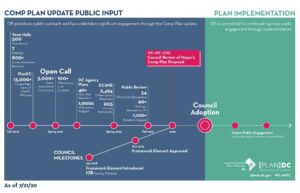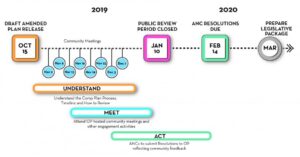- DC Office of Zoning (OZ) Agency Staff
https://www.youtube.com/live/pzjSzF2Ecls?si=0X5ewGKvSZ55UgJl&t=7374 - DC Office of Planning (OP) Agency Staff
https://www.youtube.com/live/pzjSzF2Ecls?si=hwGggDBlmXHA_Db3&t=14217
- Did OP/OZ's agency responses get at your problems and concerns, how? If not, why do you believe they didn't? And what's your follow up with these agencies or with the Committee to pursue the answers?
- Do you think we moved the needle in any way at these hearings for the people and for our interests in the city? How or why?
For me, the agencies and the city have no answers for (see attached print testimonials below for links to sources):
- 60,000 Black residents displaced in twenty years of #BuildingAsUsual
- Conservatively, there are 40,000 empty Class A housing units around the city right now — there is no luxury housing crisis (as if there ever was). We need affordable housing, social housing not luxury housing especially on public land.
- DC's definition of affordable housing IS NOT affordable for most people especially due to the immense racial wealth gap in DC.
- Parisa Norouzi, Empower DC
https://www.youtube.com/live/pzjSzF2Ecls?si=1owXIH1jsYXlJYNT&t=11994 - Anthony David, Racial Equity & The Environment, Empower DC
https://www.youtube.com/live/pzjSzF2Ecls?si=MX3-yc2Hj-IdLoCp&t=11822 - Andria Chatmon, Empower DC, Organizer
https://www.youtube.com/live/pzjSzF2Ecls?si=slp1rS2lTOvh-MGo&t=11347 - Sebrena Rhodes, Ivy City ANC
https://www.youtube.com/live/pzjSzF2Ecls?si=Xrm13Hi3GtnuE_zE&t=11136 - Shelly Repp, C100
https://www.youtube.com/live/pzjSzF2Ecls?si=qL1XRB4oWud7qipW&t=6076 - Chris Otten, DC4RD
https://www.youtube.com/live/pzjSzF2Ecls?si=AFHGwvzj3WcFBaz_&t=13138 - Historic Preservation, Rebecca Miller
https://www.youtube.com/live/pzjSzF2Ecls?si=_IderwN3JQ842u5h&t=13630 - Diedre Brown, Vice Chair NW Opportunity Partners (Ward 3) — Wisconsin Avenue Development Framework
https://www.youtube.com/live/pzjSzF2Ecls?si=3IqPQq4Irc_UpUFP&t=12473 - Parisa Norouzi on Map Amendments
https://www.youtube.com/live/pzjSzF2Ecls?si=GkpCcxQ5WOCPUrVf&t=6746


















